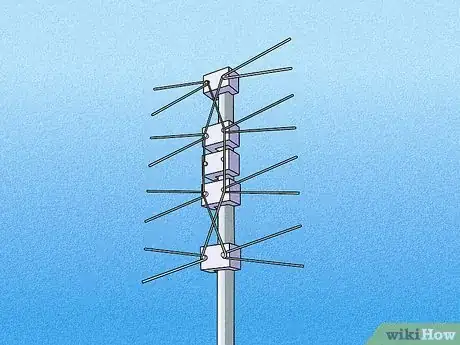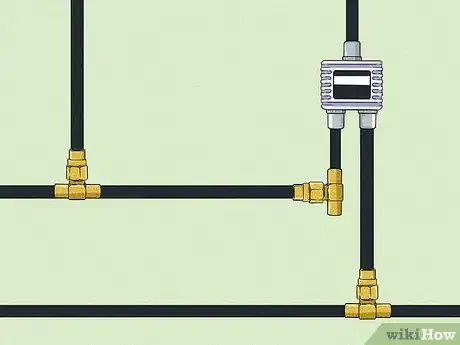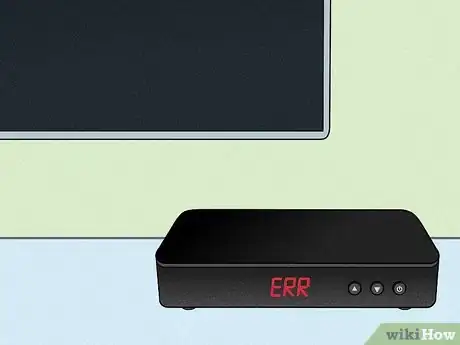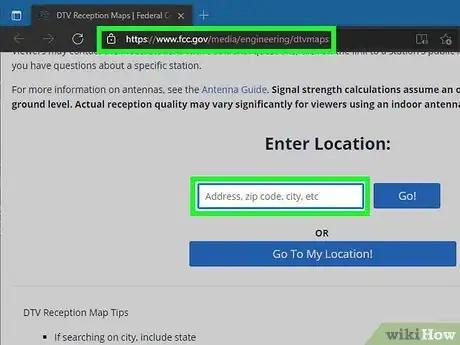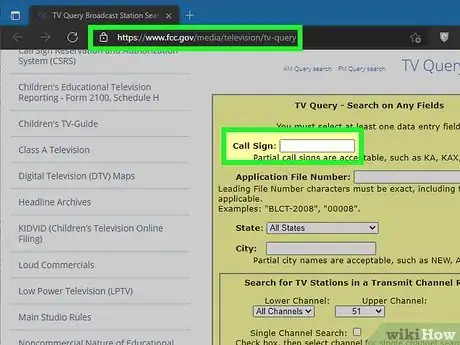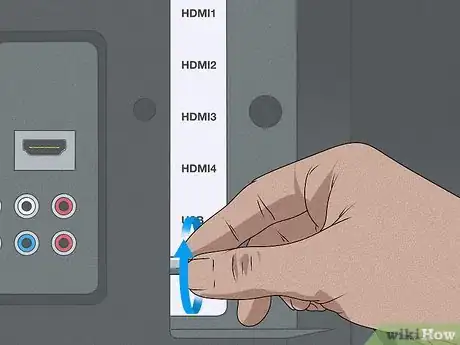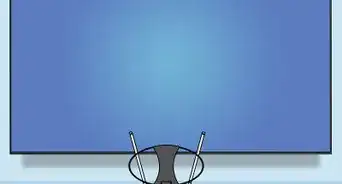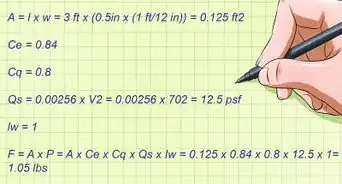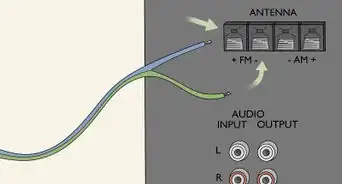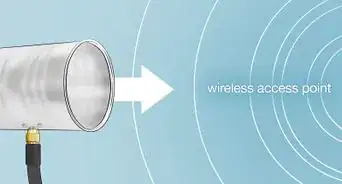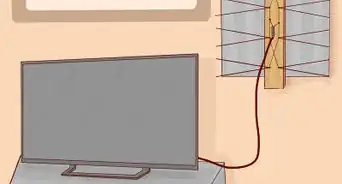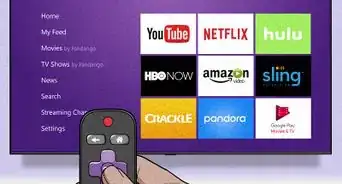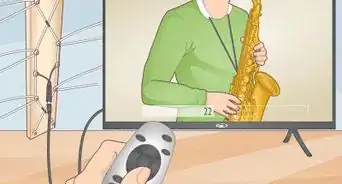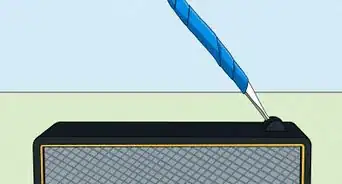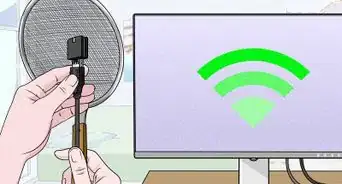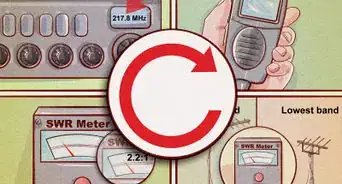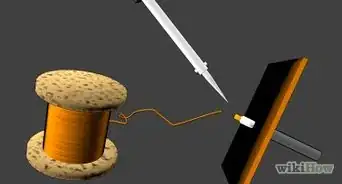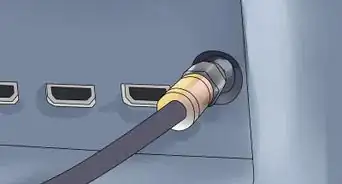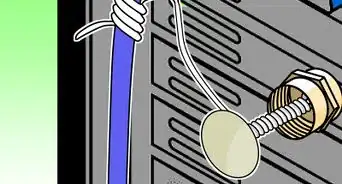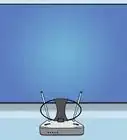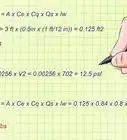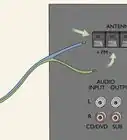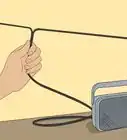This article was co-authored by wikiHow staff writer, Darlene Antonelli, MA. Darlene Antonelli is a Technology Writer and Editor for wikiHow. Darlene has experience teaching college courses, writing technology-related articles, and working hands-on in the technology field. She earned an MA in Writing from Rowan University in 2012 and wrote her thesis on online communities and the personalities curated in such communities.
This article has been viewed 76,709 times.
Learn more...
Have you installed a TV antenna and wonder why it's not working? In 2009, the US switched all broadcasts to digital signals (2012 for Britain), so if you have an analog antenna, you won't get any channels.[1] This wikiHow will teach you how to fix issues that cause your antenna not to pick up channels.
Steps
-
1Your external antenna (if you have one) may have fallen or shifted. Since even a slight change in position or angle can have a big impact on your reception, make sure your external antenna (if you have any) has not been re-oriented by wind, rain, or storms.
-
2Your antenna may not be high enough. If things like trees, hills, or buildings are between you and the broadcasting tower, then the signal might be interrupted and unable to reach your antenna, which would cause you not to see any stations.Advertisement
-
3Your flat (indoor) antenna could be in a bad location. Certain areas like skylights or on outside-facing walls seem to be the best places to put these antennae so they aren't covered up with dust or blocked by knickknacks.
- You can also use the FCC's website (https://www.fcc.gov/media/engineering/dtvmaps) to figure out which direction to point your antenna.
-
4There may have too many splitters. If you have a splitter or multiple connections to your antenna cable, you could be weakening the signal too much. Disconnect the splitter and run the cable directly to your TV or converter box.
-
5Your TV's digital tuner could be broken, faulty, or going bad. This is a little more uncommon, but your TV's digital tuner could be faulty, even if it's new. Try using your antenna with another TV; if it works on that TV, then your other TV's digital tuner is probably broken.
-
6The station's frequency may have changed. Go to https://www.fcc.gov/media/engineering/dtvmaps and enter your address to find the stations broadcasting near you. Click the station's callsign (like WJKT or WBBJ-TV) and more information will expand down to reveal the station's RF channel and repacked channel (if there is one).
- Older TVs (like the 2008 Sony Bravia) need to tune to the station's RF channel while newer TVs will get the signal when you tune to the repacked channel.
- TV stations move locations, channels, and sometimes change their transmitter power, so it's a good idea to re-scan every once in a while.[2]
-
7The station's transmitter tower might be using lower power. Sometimes a station might use lower power while they upgrade their equipment. Go to https://www.fcc.gov/media/television/tv-query and enter the station's callsign (call letters, like "WJKT") and hit the Enter or Return key on your keyboard.
- If you see "Special Temporary Authority" in red, the station is temporarily operating at reduced power.
-
8The amplifier on your antenna may be faulty. A bad amplifier can cause choppy or glitchy reception on your TV. Try removing the amplifier from your antenna and use the antenna directly with your TV without the amplifier. If you get better reception, then you know your amplifier is bad.
- You'll know your antenna uses an amplifier if it requires power. If it doesn't, your antenna does not have an amplifier.
-
9Your cables may be loose. If you have loose cables, you'll most likely get no signal or a spotty signal. So make sure your connections are tight at your TV and your antenna.
- While you're checking your connections, also take a look at your cables to make sure they aren't bent, looped, or otherwise broken.
Community Q&A
-
QuestionLocal tv station has 7 sub channels, but I can only pick up 6 even after a rescan.
 wikiHow Staff EditorThis answer was written by one of our trained team of researchers who validated it for accuracy and comprehensiveness.
wikiHow Staff EditorThis answer was written by one of our trained team of researchers who validated it for accuracy and comprehensiveness.
Staff Answer wikiHow Staff EditorStaff AnswerYour antenna may be blocked by a tree or some building if it's between you and the broadcast station/tower. Your antenna might also be pointed in the wrong direction; the article lists a website that you can use to determine where the signal is coming from (that you can't get) and you'll have to reposition your antenna accordingly. Finally, you may be too far from the station transmitting the channel and might not be receiving it.
wikiHow Staff EditorStaff AnswerYour antenna may be blocked by a tree or some building if it's between you and the broadcast station/tower. Your antenna might also be pointed in the wrong direction; the article lists a website that you can use to determine where the signal is coming from (that you can't get) and you'll have to reposition your antenna accordingly. Finally, you may be too far from the station transmitting the channel and might not be receiving it.
References
About This Article
1. Your external antenna (if you have one) may have fallen down or shifted.
2. Your antenna may not be high enough.
3. Your flat (internal) antenna is in a bad location.
4. There are too many splitters set up.
5. Your TV's digital tuner could be broken, faulty, or going bad.
6. The station's frequency may have changed.
7. The station's transmitter tower is temporarily using lower power.
8. The amplifier on your antenna is bad.
9. Your cables are loose.
